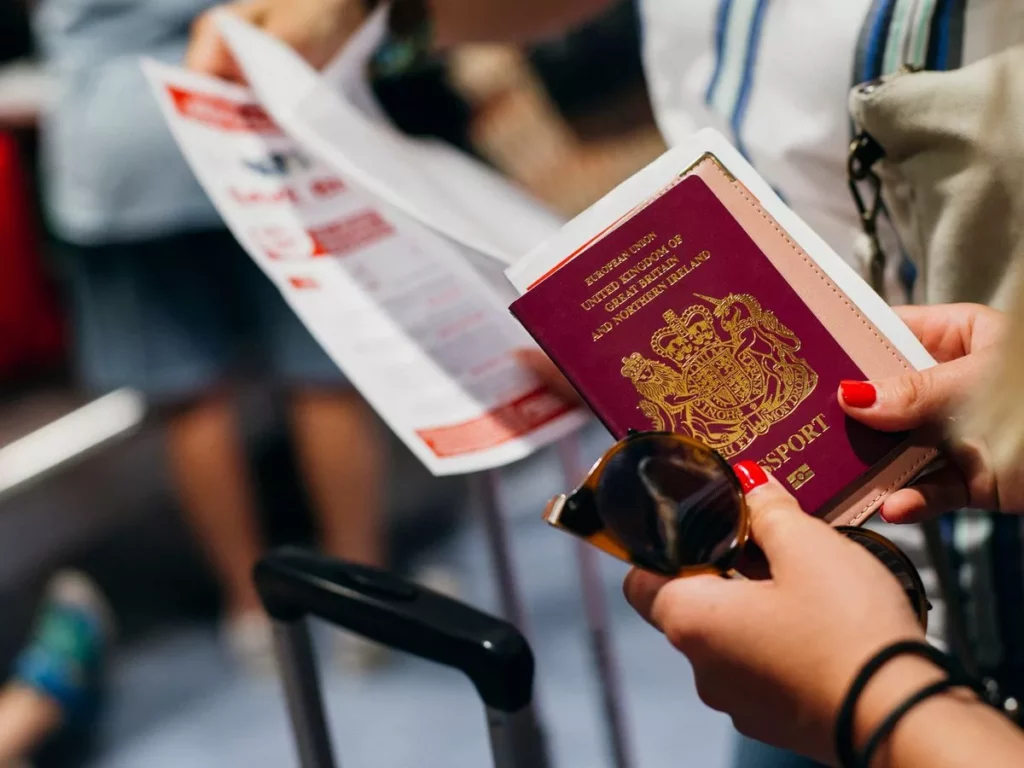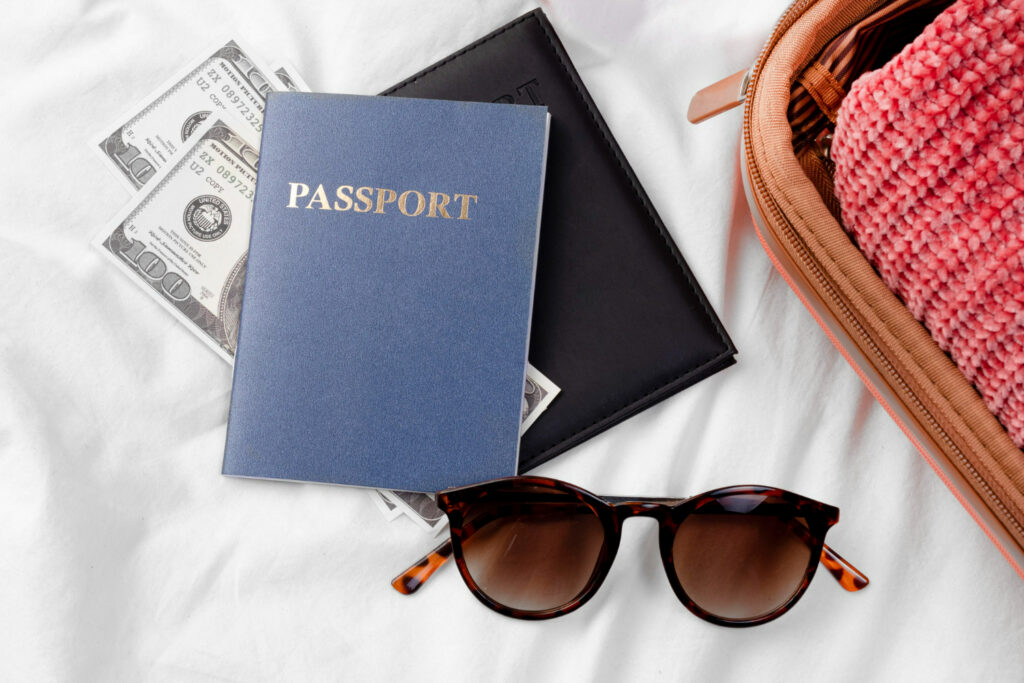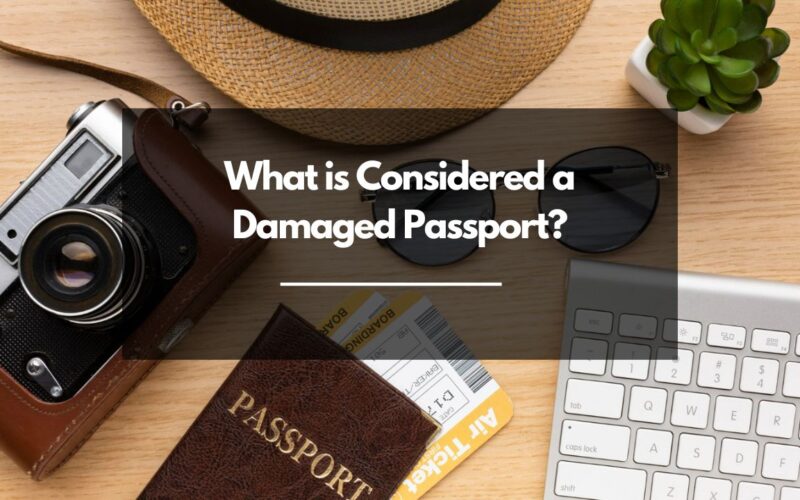As an Amazon Associate, I earn a small commission from qualifying purchases. Learn more about this.
A damaged passport is an issue that can unexpectedly ground your travel plans, and it’s important to understand what qualifies as “damage.”
Essentially, any significant harm that compromises the integrity, security, and readability of your passport can be considered damage. However, ‘damage’ is not always as straightforward as it seems, and the standards may differ from one country to another. So let’s go over this in detail.
What is Considered Damaged Passport?
Common types of damage include water damage, significant tears, unofficial markings, and detached or missing pages.
For instance, if you accidentally drop your passport in water, and the pages become illegible, that’s a clear-cut case of damage.

Similarly, if your passport has a page ripped out or your toddler decided to doodle over your photo, you’re definitely in the territory of a damaged passport.
Even seemingly minor issues can also render a passport damaged.
If your passport book doesn’t close properly because of excessive stamps, or if the lamination on your biographic data page starts peeling, immigration officials might consider your passport damaged.
However, normal wear and tear typically don’t constitute damage.
Faded ink, slight discoloration, or even a frayed cover usually won’t invalidate your passport.
Basically, the key question is whether the damage interferes with the passport’s functionality, including the legibility of your personal information and the ability for machines to read the embedded chip. This is usually when the passport’s chip isn’t working.
Now in general, it’s still worth mentioning that what’s considered ‘damaged’ is often left to the discretion of the individual immigration officer.
When in doubt, it’s always better to err on the side of caution. If you suspect your passport might be considered damaged due to water or other reasons, the safest bet is to replace it.
In the following sections, we’ll explore how to handle a damaged passport situation, including steps for getting it replaced.
How to Handle A Damaged Passport
First, Assess the extent of the damage. If it’s minimal and all your personal information is still clearly visible, and the passport can be machine-read, you might not have to rush for a replacement.
But then, you almost can’t tell unless your passport doesn’t scan at the airport. Although If your passport is biometric, you should have the option to check if the chip works.

However, keep the golden rule we discussed earlier in mind: when in doubt, it’s safer to replace.
If you’ve decided your passport is damaged enough to warrant a replacement, the next step is to apply for a new one.
Depending on your country of residence, the process can vary. In most cases, you’ll need to complete an application form, which can typically be found on your government’s official website or at the passport office.
For instance, if you stay in the US, there’s a dedicated page on the process of getting a new passport after damage or theft on the country’s official website.
However, basically, you’ll need to submit your damaged passport along with your application. Be prepared to explain how it got damaged. It’s just a formality, but honesty is always the best policy.
In addition to your application form and damaged passport, you’ll need to provide two recent, identical passport photos, proof of citizenship, and the required fee. Some countries may require additional documentation, so do your research.
Processing times can vary, but it’s best to apply for a new passport as soon as possible, especially if you have travel plans in the near future. While expedited services are often available for an additional fee, they still take time.
Tips to Protect Your Passports
After going through the ordeal of replacing a damaged passport, you probably want to make sure your new one stays in tip-top condition. So, let’s talk about some tips to extend their lifespan.
Consider using a passport cover or holder.
This is a simple, affordable solution that can prevent many types of damage.
A good passport cover offers protection from spills, tears, and even normal wear and tear.

Just ensure that it doesn’t obstruct any important information or features, as some countries require all passport features to be fully visible during inspection.
Store your Passports Properly
Secondly, always be mindful of where you’re storing your passport, both at home and while traveling.
A common mistake people make is keeping their passports in their pockets, where they can easily get damaged or even lost. Instead, opt for a safe, secure location like a lockable bag or safe when you’re on the move, and a safe or locked drawer when you’re at home.
When it comes to handling, try to avoid touching the data page directly as much as possible. Our fingers have oils that can, over time, damage the page and cause the ink to fade.
Bring them out only when needed
Your passport is not a coaster, a bookmark, or a notepad. It’s a sensitive legal document. Refrain from writing in it, bending pages, or using it to squash a pesky bug.
lastly, you also want to keep them away from the reach of your children.
Avoid exposing your passport to extreme conditions.
High temperatures, humidity, and water are archenemies of your passport. So, it’s probably not a great idea to take your passport to the beach or leave it on the dashboard of your car.
Conclusion
Keep in mind a damaged passport doesn’t spell the end of your travel plans. It’s just a speed bump. Treat it as an opportunity to refresh your most important travel document, and you’ll be back to exploring the world in no time.







